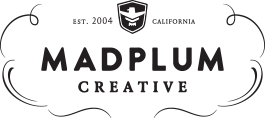Top 5 Email Marketing Tips Every Marketer Needs to Memorize
Email marketing is one of the oldest digital marketing techniques and many still consider it the most effective. A properly planned and executed email marketing campaign can generate leads, retain customer interest, lead to conversions, and improve brand loyalty and visibility. Emails are a personal form of communication and they take brands directly to their customers.
If you manage to bypass the spam filters and tempt the prospects to open the mail, you can convey the message directly to your target audience. Unfortunately, this strategy isn’t as easy as it sounds. The best campaigns are carefully planned down to the smallest details, including the time the target audiences receive the email. Here are some email marketing tips and tricks that can help you create an effective campaign:
- Research Target Audience for Email Marketing Campaign Tips
As mentioned before, emails are personal messages so you need to make sure they will appeal to your target audience. Everything from the design to the content should appeal to your prospective customers and that’s only possible if you have enough information about your target audience. Checkout out our 5 Step Guide to Creating Buyer Personas to learn more about how to
- Consider factors like demographic, age group, location, and preferences and create a buyer persona. This will help you choose the right design
- Determine the best time to send emails based on your target audience’s preferences. In most cases, people check their personal or promotional emails early in the morning or late in the evening. This is the best time to send marketing emails to adults and professionals.
- You should also consider other factors like industry, competition, products and services, etc, before you plan your email marketing campaign. This information will help you create the right content for your emails and ensure you gain good engagement from the target audience.
- Understand Content and Presentation
The presentation and content of the email is one of the most important factors in the marketing campaign. If you want your target audience to open the email, you need to pay extra attention to the content in the mail. Here are some factors you should consider:
- Subject Line – The subject line is the magnet that will encourage people to open your email and read its contents. If the subject line is boring, uninformative, and uninspiring, the email will go directly to the trash bin and your prospects will not bother to read it.
- Headline – Your prospects will notice the headline immediately after they open the email. It needs to be attention-grabbing and compelling. A well-written headline will immediately inform them what to expect from the email and make them curious about the content.
- Content Body – If your prospects have made it this far through the email, they’re likely to convert and click on links provided in the email. The content should encourage them to take the action. Make sure it’s well-written, informative, and relatively error-free.
- Images – Images are also a very important aspect of an email newsletter. Plain text emails are formal, won’t attract or engage the target audience, and are boring. Images can enliven even the dullest of all emails and make them attractive to the target audience. If you choose images that connect with your brand and customer preferences, you’ll get more success from your email marketing campaign.
- Mobile Friendly is a Must
Most modern customers alternatively use desktops and mobile phones to check their emails so you never know which device your prospects will use to access your mail. Most marketers design newsletters and emails that are suitable for desktop but not for mobile. These don’t open well/fail to load completely on the mobile platform, which can compromise the user experience. A mobile template is absolutely essential if you want to provide an optimal user experience. Here are some points to consider:
- Just like your website, your email load time matters as well. If the newsletter is full of heavy graphics, it will take more time to load. People will expect the email to load between 1 to 4 seconds, after which they won’t bother wasting time and will look elsewhere.
- Make sure there’s enough white space on the email to permit scrolling. People don’t like clicking on links accidently.
- Make sure the design and layout of the email works well on the mobile screen. Some designs don’t look great on smaller screens and can put a customer off.
- All links must be clickable and easy-to-access. If the links are too tightly packed, the users will have a difficult time trying to access them so they will give up.
- Tracking and Analysis will Help you Improve
Like all marketing strategies, email marketing should also be monitored and analyzed regularly. Here are some reasons why tracking and analysis are worth the effort:
- Tracking User Actions – This will help you determine just how your target audience interacts with your emails. You will know how many go to the spam folder, how many are dismissed, and how many generate leads. You can install one of the many email tracking or analytics tools available in the market to regularly assess your marketing programs.
- Tracking Performance – You would also have to track the email performance. You need to know how much people click on the links in the emails, which emails lead to site visits and conversions, which campaigns are more successful in generating leads, etc.
- Optimization – Once you have all the information you need, you can optimize your future emails to be more effective. Analytics will also provide information on the kind of content your target audiences will prefer.
- Automation is key to success
If you have a large customer base, you can’t personally schedule and send emails to them. The automation software will help you stay in contact with your target audience and ensure you don’t have to waste time on scheduling and engagement. Here what’s the automation software will do for you:
User Triggered Emails – When the user performs a significant action on your website, they will expect an acknowledgment from you. For example, if they make a purchase, they will expect an email with all the information they need to know about the shipping schedule, order number, customer resources, etc. The automated system will send this email immediately after the transaction is processed.
- Scheduled Emails – You can also create scheduled email campaigns. This will allow you to send content to your customers on a regular schedule based on their subscription preferences. You can choose daily, weekly, or other such schedules.
- Retargeting – With automation, you can retarget prospective customers who have abandoned cart, haven’t visited your website, or have browsed through product categories without making a purchase.
Now, when considering the effectiveness of your email campaigns, maintaining a high-quality email list is paramount. Incorporating an email validation tool into your strategy ensures that your communication channels remain effective and efficient. By routinely verifying and cleaning your email list, you enhance deliverability, minimize bounce rates, and ultimately fortify your foundation for successful automated email campaigns.
These are just some of the many ways in which good automation software can help with your email marketing campaign. To learn more check out our Beginners Cheat Sheet to Marketing Automation.
If you follow these email marketing tips, you will have a great campaign on your hands. Email marketing is worth the added effort and investment because it has higher ROI than other techniques. In fact, a survey conducted by Direct Marketing Association indicates that email had a median ROI of 12.2%, which is four times higher than other popular marketing techniques. That’s why you should invest some of your time and money on this campaign.
Posted In: Blog, Digital Marketing, Experience Marketing




